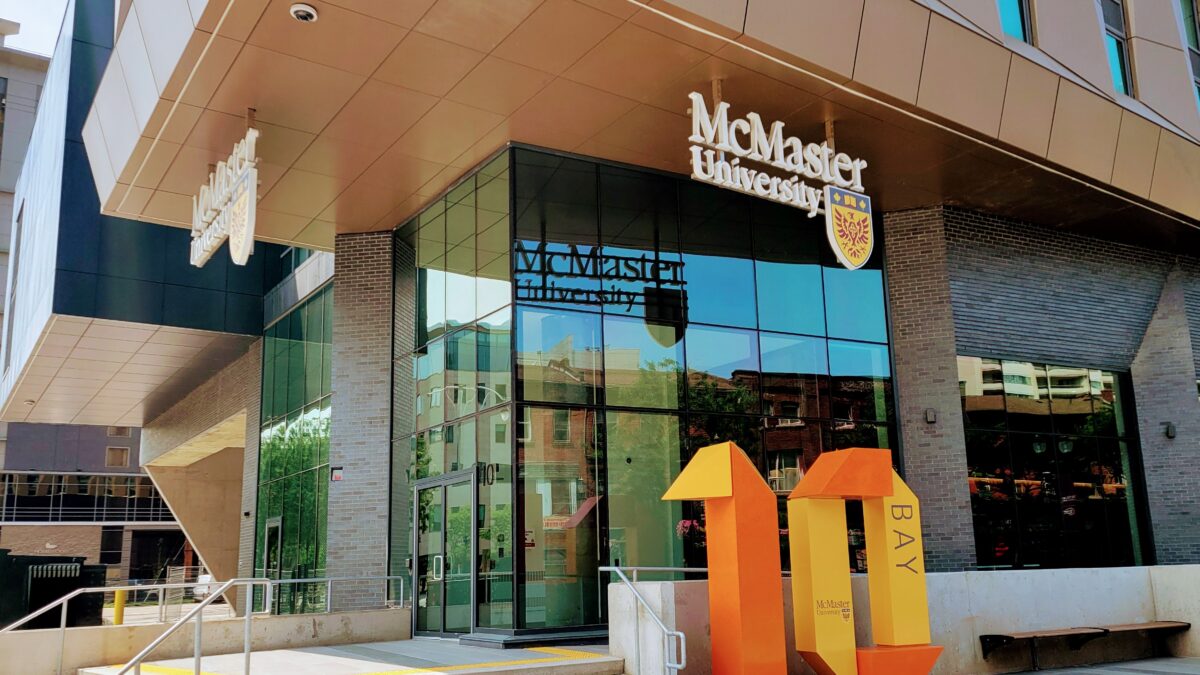McMaster University is no longer among the top 100 universities in the world.
The 2024 Shanghai Rankings Academic Ranking of World Universities was released last week, and McMaster moved into the 101-150 category, down from 98 last year.
McMaster peaked in 2017 at the 66th position, having otherwise been ranked in the mid-80s to mid-90s since the Shanghai Rankings were first released in 2003.
Asian Universities Rising, McMaster is Not Declining
McMaster’s ‘decline’ in the global rankings is not unexpected. Asian universities, especially in China, are climbing the rankings.
All post-secondary rankings include citation counts and alumni impact as key factors in their formula. Established universities benefit more from their past citations and alumni impact than newer universities.
Asian universities continue to see their citation counts increase, and alumni base grow. They are improving their research outputs and impacts. Simply put, they are taking their rightful place on the global stage.
McMaster University’s “total score” ranking remains in the ~25.0 range, but 25.0 is no longer enough to be in the Top 100.
The 100th university in the 2024 rankings scored 26.1.
As some of its top faculty of medicine researchers retire in the coming years, McMaster’s total score will decrease.
McMaster’s clinical medicine program is currently ranked 39th in the world, in large part on the strength of the innovations produced during the 1970s and 80s.
McMaster’s story is Hamilton’s story.
As Dan Breznitz explains in his book Innovation in Real Places, during “Hamilton’s zenith as economic powerhouse … between WWII and the oil shocks of the 1970s” the health benefit plans for workers at Stelco and Dofasco provided the financing for innovation at McMaster’s medical school.
“Steelworking has always been a dangerous line of work with unique medical needs, which the unions, through their benefits plans, sponsored creative solutions for, sponsoring them to the stage of prototyping and early adoption.” (Pg. 109)
McMaster researchers could innovate without the burden (and uncertainty) of applying for government research grants or seeking private financing from pharmaceutical or medical treatment corporations, or venture capital funds.
No Longer “Top 100” – What is McMaster’s Future Branding?
Canada’s mid-size universities are challenged.
Canada’s productivity crisis, and stagnant per-capital gross domestic product, means government funding will not return to the peaks of the late 20th century.
Financial pressures are mounting. Undergraduate enrolment is stagnant. Employee and administrative costs are increasing. For Ontario institutions, debts incurred during the 2003/04 ‘double cohort‘ expansion of amenities such as recreation centres and student centres are coming due.
McMaster competes globally for the best graduate students in its flagship research areas. The challenge for McMaster is that other institutions can easily outbid for top talent.
Much as the global economy is becoming more and more concentrated in major urban centres, so is post-secondary research.
McMaster remains one of the best universities in the world, Canada’s best university in a mid-size city, and now needs to determine what its competitive advantages will be.
McMaster’s Shanghai Ranking (2003 to present)
Year, Ranking, (Score)
2003 – 86 (27.7)
2004 – 88 (26.0)
2005 – 90 (24.9)
2006 – 90 (24.7)
2007 – 87 (25.0)
2008 – 89 (25.1)
2009 – 91 (24.6)
2010 – 88 (25.2)
2011 – 89 (25.3)
2012 – 92 (25.0)
2013 – 92 (24.9)
2014 – 90 (24.8)
2015 – 96 (24.4)
2016 – 83 (26.5)
2017 – 66 (29.0)
2018 – 86 (27.0)
2019 – 90 (27.1)
2020 – 98 (25.8)
2021 – 92 (26.5)
2022 – 90 (26.7)
2023 – 98 (25.1)
2024 – 100 to 150 (scores are only published for the Top 100. The 100th ranked university scored 26.1)
Note: 29.0 – McMaster’s top-ever score in 2017 – would rank in the 77th position this year.

Sidebar:
I travelled to the Persian Gulf twice in 2009 to visit Doha, Qatar’s “Education City” as a higher education reporter for Macleans Magazine.
One morning, over breakfast with a fellow journalist from the Wall Street Journal and a managing editor of a South African newspaper, we discussed the growth of innovation at Asian universities, the billions being spent in Qatar to import American branch campuses, and what it all meant for post-secondary institutions in America, Canada, and South Africa.
In sum, they were correct the Education City “branch plant” model would not succeed.
In contrast, the Chinese model of sending its best talent overseas to the best global universities, and then having that talent return to populate the facility of their universities would make China’s universities among the best in the world.
The South African journalist [I long ago forgot their name and what publication they were working for] noted that Anglosphere universities needed to prepare themselves to compete for international graduate students. That the days of being the only option for the children of the global mid-elite would come to an end.
This has come to be true.
Update – October 9, 2024: McMaster University dropped out of the Top 100 in the Times Higher Education rankings.
Production Details v. 1.0.0 Published: August 17, 2024 Last updated: August 17, 2024 Author: Joey Coleman Update Record v. 1.0.0 original version v. 1.1.0 added Times Higher Education Ranking info.

